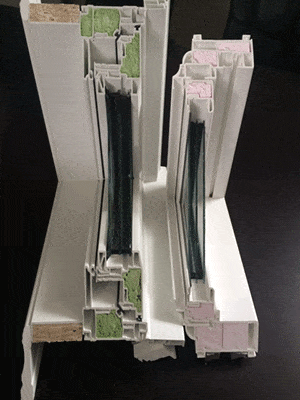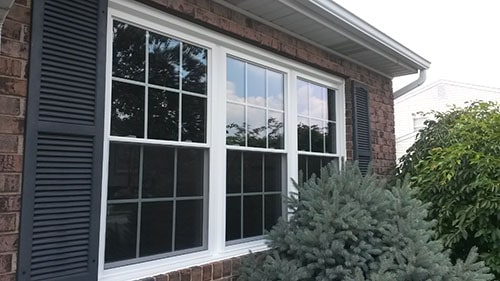Are Foam Filled Windows Better?
One of the more common questions that we here in the Milwaukee area, is regarding foam filled windows. Are they actually better? Is the upgrade worth the money? Which type of foam is better, injected or push-in? The answer like many things in life of course is… It depends.

Foam Filled Windows have benefits
Foam filled windows will provide some benefits across the board, the debate really comes down to how much of a benefit, and is it worth the added expense. My first recommendation to replacement window shoppers is to check how this option affects the U factor of the window. Some foam filled windows will have a U factor that improves by 2+ points, others will not budge at all. There are a variety of factors for this, most notably in the design of the extrusion(the “inner-framing” of the window). Windows that have many chambers will often see less impact on U factor, because those dead air spaces actually do a decent job of insulating. This is not necessarily reflective of product quality, it is just a different means to an end. That said, the primary benefits to foam filled windows will be superior thermal performance (measured by U factor and condensation resistance), as well as a little bit of extra structural stability. It could be be conceivable to improve sound transmittance as well, however the impact here is probably negligible in most cases.
Types of Foam Filled Windows
The two common methods to foam fill windows are injected foam, where spray foam is actually injected into the extrusion, and push in foam, where expanded polystyrene is cut and pushed in. Despite what sales people may tell you, both are effective methods when executed properly, and each does have its own minor pros and cons. Injected foam is generally higher density, and therefore a better insulator. This advantage is somewhat mitigated however by the fact that these are pretty small spaces, so the actual increase in R factor is minimal. The downside of injected is that spraying foam can produces air pockets and inconsistent fill. Push in foam eliminates that potential issue, however this type of foam must be cut to exacting tolerances where it provides a tight fit in the chamber to be effective. The manufacturers that do this right, have CNC machines that cut the foam precisely to fit.
Bottom Line
Ultimately, the option for foam filled windows is better, however the value of it depends on the price vs performance increase. This is generally a pretty inexpensive option, so it does make sense in many cases. The one thing to keep in mind, is that when comparing two different products, the type or even presence of foam filling does not necessarily make that product better than the other. A precisely designed and manufactured unit will be the better option, with or without foam.
Brandon Erdmann is the owner of HomeSealed Exteriors in Milwaukee, WI. He’s a window installation expert, a supporter of this site and an all around great guy. If you’re in the Milwaukee area and you’re thinking about new windows you should give Brandon a ring. You’ll be glad you did.

